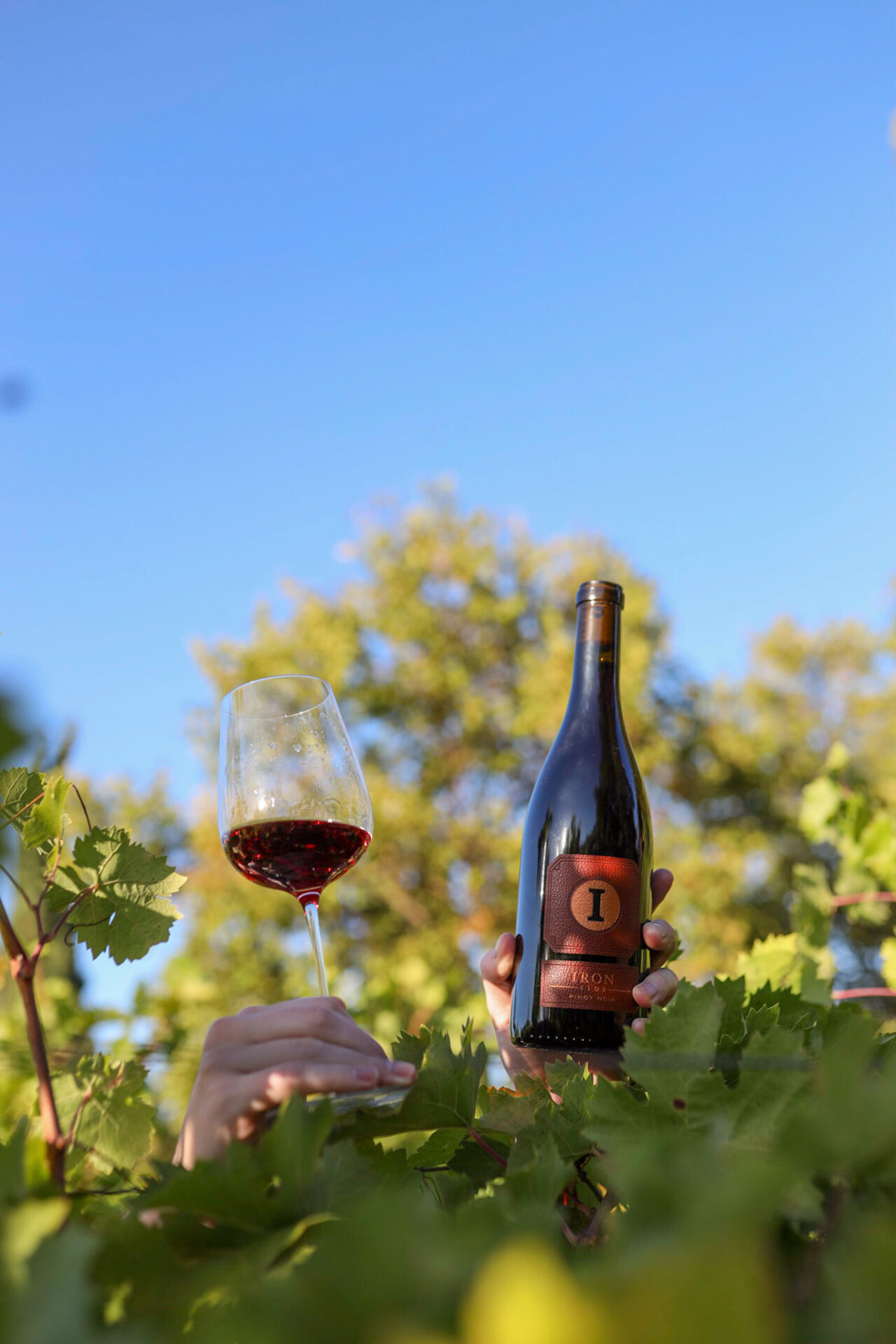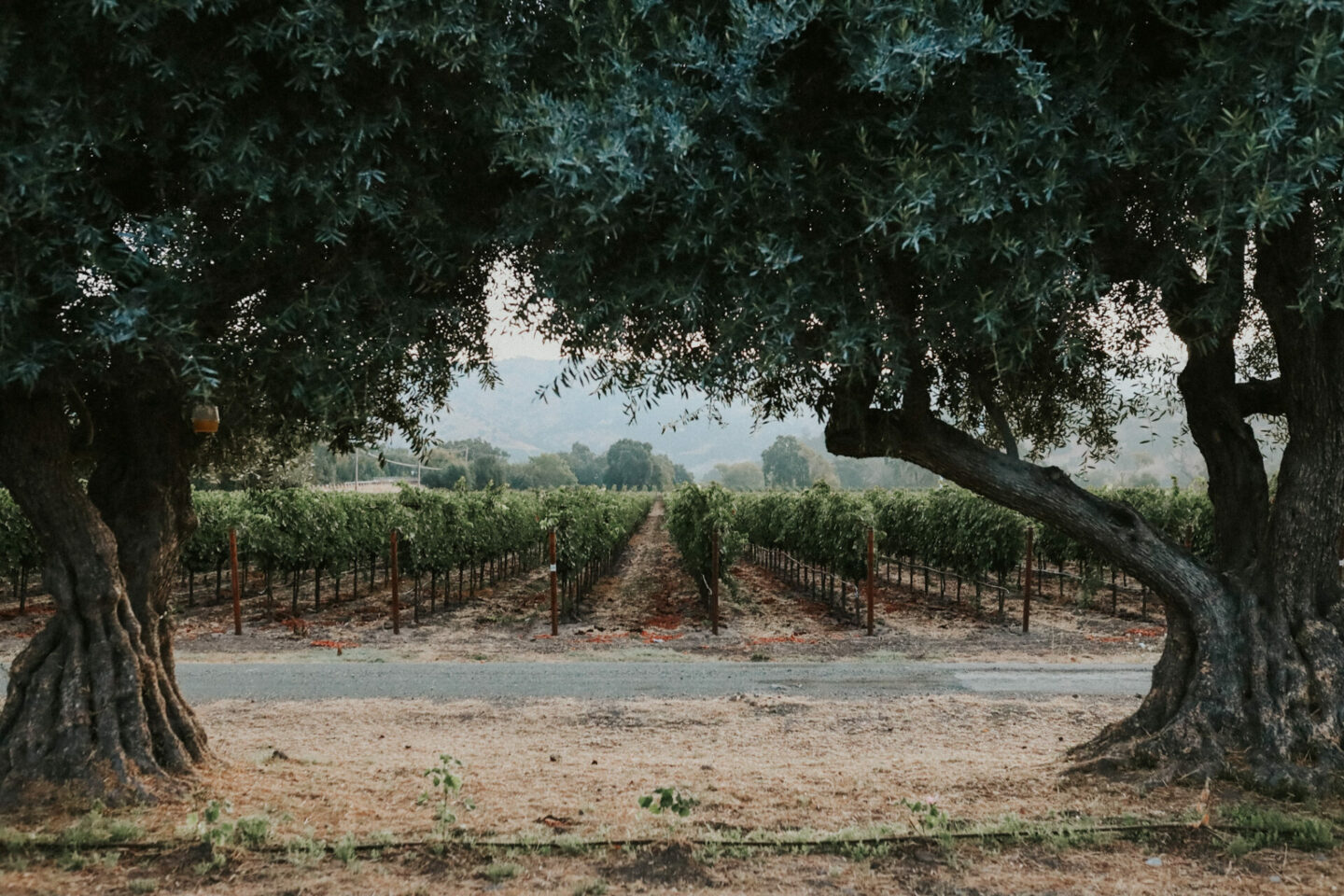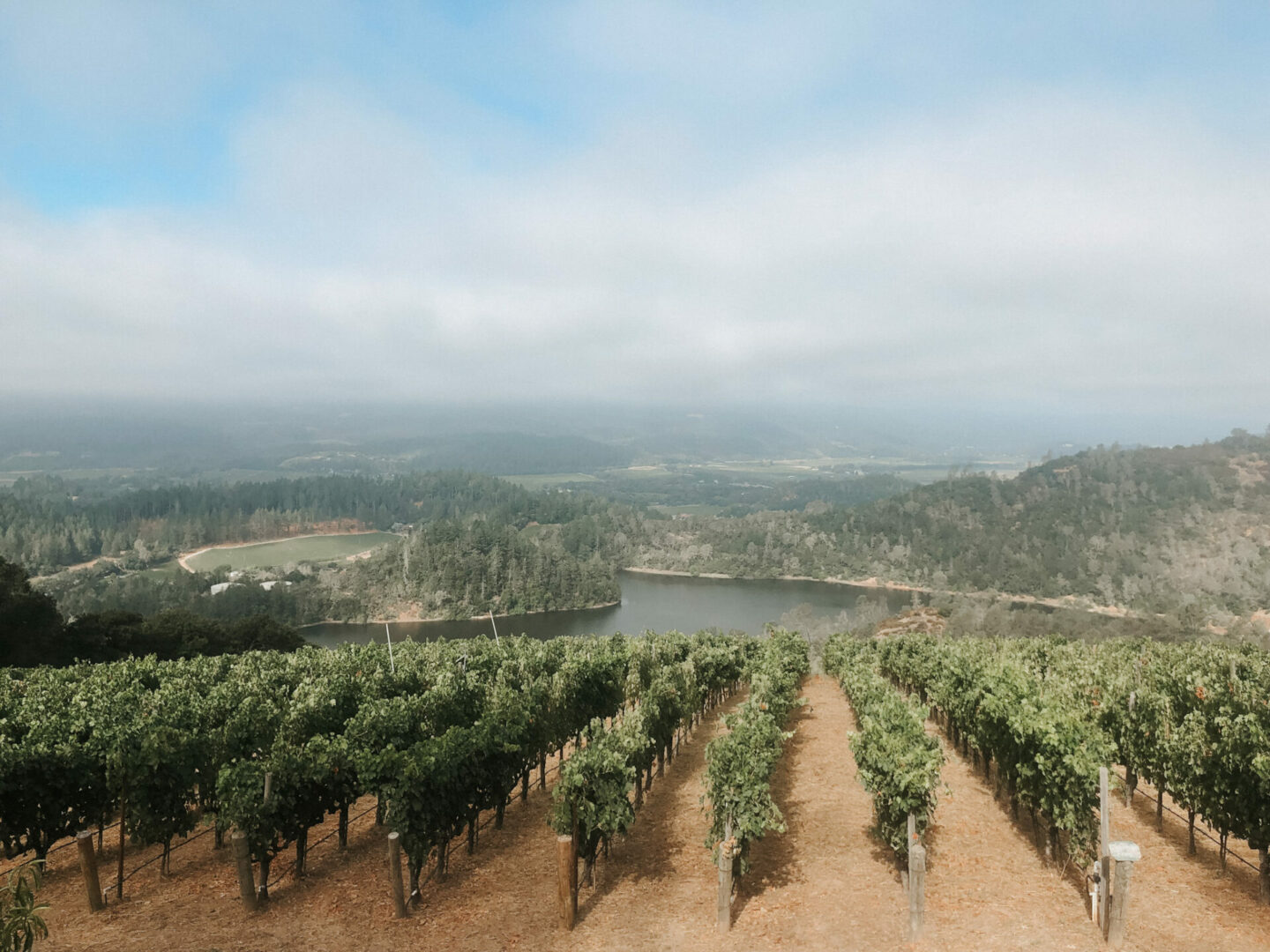
When I first decided to take a job in California, it wasn’t just about the career move. It was about being close to the heartbeat of the most important wine regions in the country. My love affair with wine was just beginning, and I knew that being in California would allow me to dive headfirst into this world that was quickly capturing my heart.
Fast forward to today—I’m living my dream in Napa, surrounded by vineyards that stretch as far as the eye can see. It’s everything I ever hoped for, but what truly amazes me is that Napa is just the start. California wine country is vast, diverse, and full of surprises, with incredible regions waiting to be explored just around the corner.
Whether you’re a seasoned connoisseur or just starting to explore the world of wine, visiting California wine country is something every wine lover should experience at least once in their life.
The Rich History of California Wine Country
Wine Country, California, boasts a rich history that dates back to the 18th century when Spanish missionaries planted the first vineyards to produce wine for religious ceremonies. The region’s wine industry truly began to flourish in the mid-19th century, thanks to European immigrants who brought with them their viticultural expertise and passion.
Despite setbacks like Prohibition in the 1920s and the devastating phylloxera epidemic, California’s wine industry rebounded and gained international recognition. The 1976 “Judgment of Paris,” where California wines outshone French counterparts in a blind tasting, solidified its place on the global stage.
Today, California vineyards, particularly in regions like Napa Valley and Sonoma, are celebrated for their diverse terroirs and world-class wines. This history of perseverance and innovation continues to shape California’s status as a premier wine-producing region.

Why California Wineries Are Special
There’s something magical about California wine country that sets it apart from other wine regions. Perhaps it’s the perfect combination of climate, soil, and innovation that makes this area a winemaker’s paradise.
The state’s diverse microclimates allow for the cultivation of a wide variety of grapes, from the cool-climate Pinot Noir of the Russian River Valley to the bold Zinfandel of Paso Robles. California’s wine country isn’t just about the wine; it’s also about the experience.
Visitors flock to Napa and Sonoma not only for the wine tasting but also for the stunning landscapes, farm-to-table cuisine, and luxurious accommodations. It’s a place where you can savor life’s pleasures, one glass at a time.
What Wine is California Known For?
These are 4 Must-Try Popular California Wines and Varietals:
Cabernet Sauvignon
Arguably the king of California wines, Cabernet Sauvignon is a bona fide Napa Valley wine. Warm days and cool nights help produce grapes with intense flavor and structure. This full-bodied red is known for its bold flavors of blackcurrant, plum, and a hint of oak, making it a favorite for aging and pairing with hearty dishes like steak.
Chardonnay
California’s most popular white wine, Chardonnay, is grown throughout the state but shines particularly in Sonoma County and the Central Coast. This versatile grape variety can produce a range of styles, from crisp and citrusy to rich and buttery, depending on how it’s aged. Its broad appeal makes it a staple in wine cellars and on dinner tables alike.
Zinfandel
Zinfandel is California’s signature grape, with a history as robust as the wine itself. Originating from Croatia, it found a new home in California, particularly in regions like Paso Robles. Known for its bold, fruit-forward flavors of blackberry, cherry, and spice, Zinfandel is a wine that can stand up to rich, flavorful foods.
Pinot Noir
Often considered one of the most challenging grapes to grow, Pinot Noir finds its ideal conditions in California’s cooler coastal regions, where the Pacific Ocean’s cooling influence creates a perfect environment.
In areas like the Russian River Valley and Santa Barbara, this delicate red wine is prized for its complex flavors of cherry, raspberry, and earthy undertones, with a silky texture that’s hard to resist.

Exploring California Wine Country: Main Regions
As of 2024, California is home to 147 officially recognized American Viticultural Areas (AVAs), each with its unique characteristics that contribute to the state’s reputation as a world-class wine producer.
From the iconic Napa Valley AVA and Sonoma County to lesser-known but equally intriguing regions, California’s diverse AVAs showcase a wide range of climates, soils, and grape varieties.
In this section, we’ll explore some of the main wine regions that define California’s vibrant wine landscape, delving into what makes each area special and how they contribute to the richness of the state’s wine offerings.

Napa Valley
Napa Valley is one of the world’s most famous wine regions, especially known for its incredible Cabernet Sauvignon. The soil here mixes volcanic and gravelly types, which helps grow fantastic grapes.
Napa County’s weather, with its hot, dry summers and cool, foggy mornings, gives the grapes rich and complex flavors. The variety of climates in Napa allows them to grow many types of grapes like Chardonnay and Merlot.
Besides great wine, Napa offers fancy wine tastings, top-notch restaurants, and stunning vineyards. Its focus on sustainability and innovation keeps Napa ahead in the wine world.

Sonoma Valley
Sonoma County is Napa Valley’s more laid-back neighbor, but has just as many amazing wines and beautiful scenery.
With 18 different sub-AVAs, Sonoma’s landscape ranges from cool, foggy hills to warmer inland valleys, making it very diverse. The cool Russian River Valley is perfect for Pinot Noir and Chardonnay, while the warmer Dry Creek and Alexander Valleys are ideal for Zinfandel and Cabernet Sauvignon.
Sonoma is full of small, family-run wineries, so wine tastings here feel personal and cozy. Many vineyards use organic and eco-friendly farming, which makes their wines unique.

Paso Robles
Paso Robles is a rapidly growing wine region known for its bold red wines like Zinfandel and Rhône varieties such as Syrah and Grenache.
The soil here has lots of limestone, and the big differences between hot days and cool nights help the grapes develop great flavors while keeping their natural acidity. The warm, dry climate is perfect for making rich, fruity wines with a good balance.
Paso Robles also has creative winemakers who experiment with different grape blends to make unique wines.

Santa Barbara County
Santa Barbara County is known for its cool-weather wines like Pinot Noir and Chardonnay, thanks to its coastal, ocean-influenced climate. The east-to-west valleys let in fog and cool ocean breezes, creating a cooler climate perfect for making refined wines.
The Santa Ynez Valley and Sta. Rita Hills are especially famous for their Pinot Noir, while areas like Happy Canyon are starting to shine with Bordeaux grapes like Cabernet Sauvignon.
The different soil types, from sandy to clay, add a variety of flavors to Santa Barbara wines. The area also offers a relaxed wine-tasting experience with beautiful views of the ocean and hills, blending traditional and modern winemaking techniques.
Lesser Known Regions
Temecula Valley AVA
The Temecula Valley AVA, located near Los Angeles in Southern California, is known for its warm climate and diverse wines, including robust reds like Cabernet Sauvignon and crisp whites like Sauvignon Blanc. Close to the Pacific Ocean, the region benefits from cooling breezes, producing balanced, flavorful wines in a scenic setting
Mendocino County AVA
Mendocino County, nestled in Northern California, is a hidden gem in the wine world, known for its rugged landscapes and commitment to organic and sustainable viticulture. The region boasts a diverse range of microclimates, producing everything from rich reds to crisp whites, with a special emphasis on Pinot Noir, Chardonnay, and Zinfandel. Mendocino’s AVAs, like Anderson Valley, are gaining recognition for their distinctive wines that reflect the county’s unique terroir.
Santa Lucia Highlands AVA
The Santa Lucia Highlands is a sub-AVA within the larger Central Coast AVA in California. Located in Monterey County, this region is known for its cool climate conditions, making it ideal for producing high-quality Pinot Noir and Chardonnay.
Sierra Foothills AVA
The Sierra Foothills, a historic wine region in Northern California, is known for its rugged landscapes, rich history, and diverse range of wines. This area, encompassing regions like Murphys and Amador County, offers a unique combination of high elevation, volcanic soils, and a warm, dry climate, which contribute to the production of deeply flavored and robust wines.
The quaint wine regions here are celebrated for their boutique, family-owned wineries and diverse selection of wines, particularly Zinfandel and Barbera.
Livermore Valley AVA
Livermore Valley is one of California’s oldest wine regions, and it played a big part in introducing Chardonnay and Sauvignon Blanc to the United States. The valley’s mix of warm days and cool nights, along with its gravelly soils, is perfect for growing strong, flavorful wines, especially Cabernet Sauvignon.
Lodi
Lodi, located in the heart of California’s Central Valley, is renowned for its old-vine Zinfandel, which produces wines with bold, rich flavors. Lodi has gained recognition as a top wine region, offering everything from full-bodied reds to crisp whites, and is celebrated for its sustainable farming practices.
Santa Cruz Mountains
The Santa Cruz Mountains AVA, located between the San Francisco Bay Area and the Central Coast, is known for its rugged terrain and cool coastal breezes. This unique region produces exceptional Pinot Noir, Chardonnay, and Cabernet Sauvignon, with wines that reflect the area’s diverse microclimates and elevation.
Berkeley
Berkeley might not be famous for vineyards, but it has a vibrant urban wine scene where creative winemakers produce small-batch wines right in the city. The area stands out for its focus on organic, natural winemaking.
Santa Clara Valley
Santa Clara Valley is a historic wine area that blends the old with the new, featuring both long-standing wineries and fresh vineyards. With its Mediterranean climate of warm summers and cool, foggy nights, the region is ideal for producing a variety of wines.

Conclusion
California wine country is a place where passion, tradition, and innovation come together to create something truly special.
Seasoned wine lovers or newbies alike will find something new to discover in this vibrant region. From the bold Cabernets of Napa to the elegant Pinot Noirs of Santa Barbara, California’s wines offer a taste of the state’s rich history and diverse terroir.
So, why not plan your next wine-tasting adventure and see what all the buzz is about?
Frequently Asked Questions
- What is the best time to visit California wine country?
The best time to visit is during the fall harvest season, from August to October, when the vineyards are at their most vibrant, and many wineries host special events.
- Which California wine region is best for Pinot Noir?
The Russian River Valley in Sonoma County is renowned for producing some of California’s best Pinot Noir, thanks to its cool climate and foggy mornings.
- How do I choose the right California wine?
Consider what flavors you enjoy—if you like bold, rich wines, go for a Cabernet Sauvignon from Napa. If you prefer something lighter, a Sonoma Chardonnay or Sauvignon Blanc might be more to your taste.
